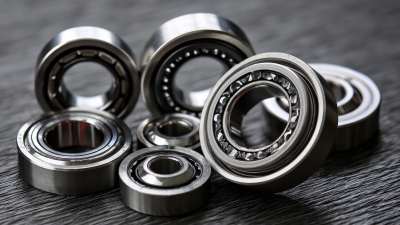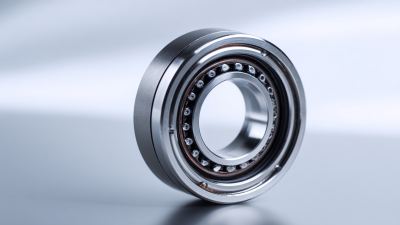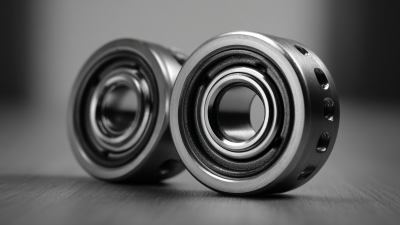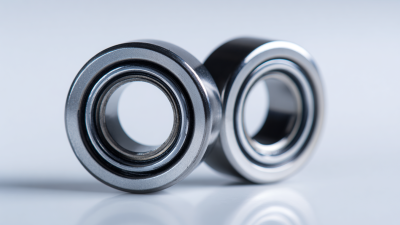In the ever-evolving landscape of modern machinery, the efficiency and reliability of components are paramount to operational success. Angular Ball Bearings have emerged as a critical solution in this realm, offering significant advantages that enhance performance across various industrial applications. According to a report by MarketsandMarkets, the global bearings market is expected to reach $102 billion by 2025, with angular ball bearings representing a substantial segment due to their unique design and functionality.
These bearings are engineered to support both radial and axial loads, providing exceptional stability and precision. Their versatility makes them indispensable in diverse sectors—in fact, a study by AMETEK indicates that machinery equipped with Angular Ball Bearings can achieve up to 30% improved load-carrying capacity compared to traditional bearings. As industries increasingly prioritize efficiency, the role of Angular Ball Bearings in reducing friction, enhancing durability, and ultimately driving down maintenance costs has never been more critical. In the following sections, we will delve into the top five benefits of incorporating Angular Ball Bearings into modern machinery to highlight their importance and effectiveness in today’s competitive market.

Angular ball bearings are pivotal in enhancing the efficiency of high-speed machinery due to their unique design and capabilities. Their ability to accommodate both radial and axial loads simultaneously makes them particularly advantageous in applications that demand precision and durability. This dual load capacity allows machinery to operate at higher speeds without compromising stability, resulting in improved overall performance.
One of the standout benefits of angular ball bearings is their reduced friction during operation. The optimal contact angle enables smoother rotations, which is crucial in high-speed environments. This reduction in friction leads not only to lower energy consumption but also to minimal heat generation, extending the life of both the bearings and the machinery itself. As industries continue to push for faster production speeds and enhanced outputs, the integration of angular ball bearings stands out as a significant advancement in machinery design and functionality.
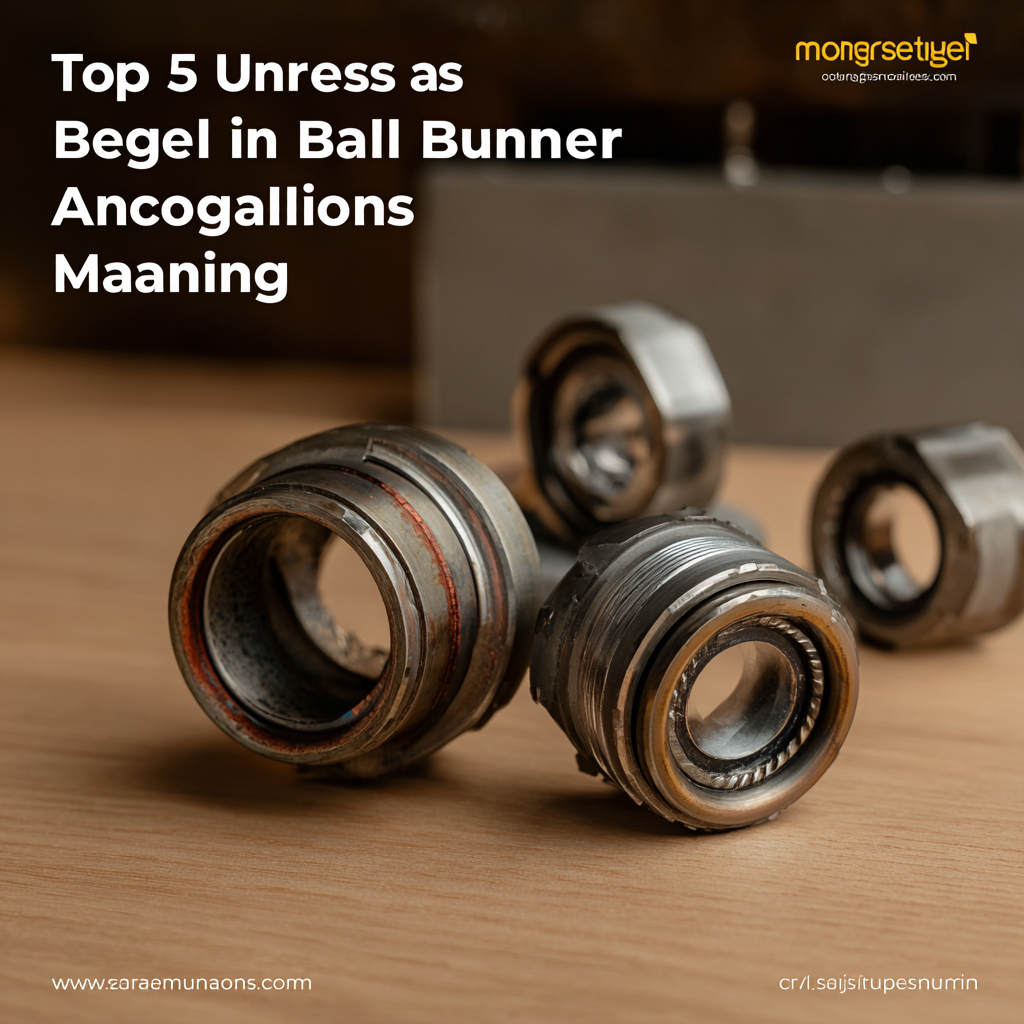
Angular ball bearings are essential components in modern machinery, primarily due to their unique design that excels at reducing friction. The decreased friction leads to lower energy consumption, which is crucial in today’s energy-conscious environment. By minimizing resistance, these bearings not only enhance the efficiency of machines but also contribute to prolonging their lifespan. This effectively translates to reduced operational costs for industries relying heavily on machinery for production.
Tips for maximizing the benefits of angular ball bearings include regular maintenance and lubrication, ensuring that they operate smoothly and efficiently. Choose the right size and load rating for your specific application to optimize performance and energy efficiency. Additionally, consider investing in high-quality bearings, as these can further reduce friction and wear, ultimately leading to significant cost savings over time.
Incorporating angular ball bearings into machinery design not only addresses energy consumption but also enhances overall reliability. By implementing smart design practices and regular performance checks, businesses can leverage the full potential of these bearings, creating a sustainable manufacturing process that benefits both the environment and profitability.
| Benefit | Description | Impact on Energy Consumption |
|---|---|---|
| Reduced Friction | Angular ball bearings have a raceway design that minimizes friction between rolling elements and races. | Lower energy losses during operation, leading to improved efficiency. |
| Higher Load Capacity | Designed to handle axial and radial loads, making them versatile for various applications. | Reduced need for additional bearings that consume more energy. |
| Durability | Manufactured with high-quality materials that withstand wear and tear. | Less frequent replacements lead to lower resource consumption and energy use. |
| High Speed Performance | Designed for high-speed applications, allowing for increased production rates. | Improved throughput with optimized energy consumption in machinery. |
| Noise Reduction | Angular ball bearings operate with reduced noise levels, contributing to a better working environment. | Lower noise means less energy required for sound mitigation in facilities. |
Angular ball bearings play a critical role in enhancing the reliability and lifespan
of modern machinery, particularly in harsh operational conditions. According to a report by the American Society of
Mechanical Engineers (ASME), equipment failure due to inadequate bearing performance can lead to significant downtime, costing industries
up to $50 billion annually in lost productivity. Angular ball bearings, designed for
high-load capacity and precision, effectively manage both radial and axial loads, making them ideal for demanding applications such as
aerospace and heavy construction machinery.
The durability of angular ball bearings is further supported by data from the International Organization for
Standardization (ISO), which indicates that using higher-grade materials can increase bearing lifespan by up to 40%.
In extreme environments, such as high temperatures or exposure to corrosive substances, the robustness of angular ball bearings helps reduce wear
and tear. This not only minimizes maintenance needs but also supports operational efficiency in sectors where machinery is subjected to
relentless stress, ensuring continuity and reliability in production processes.
Angular ball bearings play a crucial role in modern manufacturing, particularly in precision engineering applications. These bearings are designed to accommodate both axial and radial loads, making them ideal for equipment that requires high precision and reliability. In industries such as aerospace and robotics, where even minor deviations can lead to significant issues, the accuracy provided by angular ball bearings is indispensable.
Their ability to function effectively under high loads and varying speeds enhances the overall performance of machinery. As the global bearings market continues to grow, projecting an increase to USD 97.10 billion by 2032, the demand for specialized bearing designs, including angular ball bearings, is likely to rise. The integration of angular ball bearings not only streamlines manufacturing processes but also ensures the longevity and durability of machinery, which is essential in maintaining competitiveness in today's fast-paced industrial environment.
In the realm of modern machinery, the choice of bearing type can significantly influence the overall operational costs. Angular ball bearings are increasingly recognized for their cost-effectiveness, particularly in industrial applications. According to a report by MarketsandMarkets, the global bearings market is projected to reach $120 billion by 2025, highlighting the critical role that efficient bearing solutions play in reducing maintenance and replacement costs. Angular ball bearings, with their ability to handle both axial and radial loads, exhibit a longer service life than traditional bearings, leading to substantial long-term savings.

Investing in angular ball bearings translates not only to reduced downtime but also to lower energy consumption. A study from the International Journal of Advanced Manufacturing Technology indicates that using high-quality roller bearings can improve energy efficiency by up to 15%. This is particularly relevant in industrial settings, where even slight improvements in energy savings can lead to significant cost reductions over time. Furthermore, the enhanced performance characteristics of angular ball bearings, such as lower friction and better heat dissipation, contribute to fewer repairs and replacements, ultimately supporting a more sustainable approach to machinery maintenance.

